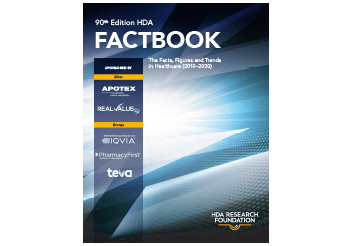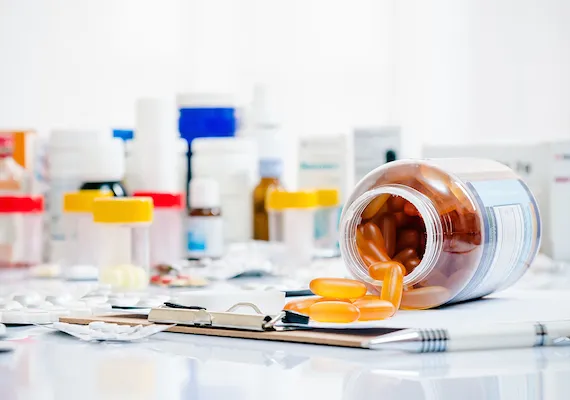ARLINGTON, Va. — In 2018, sales through pharmaceutical distributors increased by 6.7%, reaching $492.54 billion, according to a new report by the HDA Research Foundation. The 90th Edition HDA Factbook: The Facts, Figures and Trends in Healthcare (2019–2020) also notes that chain drug stores were the largest customer base for pharmaceutical wholesalers — accounting for 44.6% of all sales, a slight increase from 2017. Distributor margins, however, continued a four-year slide, though they showed increases in efficiency.

“For nearly a century, the Factbook has helped to inform the business decisions of supply chain leaders, experts and other stakeholders,” said Perry Fri, executive vice president of Industry Relations, Membership and Education, HDA; and chief operating officer of the HDA Research Foundation. “The 2019 edition illustrates how every day, distributors are innovating to deliver hundreds of millions of medicines and healthcare products — safely, reliably and efficiently.”
Primary data for the HDA Factbook are collected through an annual survey of HDA-member distributor companies with sales greater than $1 billion. Supplementary information also is included from health care and governmental organizations.
Also noted in the Factbook:
• Distributors continue to use their assets efficiently. The industry asset turnover rate increased significantly in 2018, to 6.3 times, up from 5.7 times in 2016 and 2017, meaning that net sales were 6.3 times larger than the book value of its assets.
• In 2018, distributors further reduced their days in inventory to 27 days (from 28.1 days in 2017 and 28.5 days in 2016), which is the lowest inventory holding period in at least 20 years.
• Total annual costs associated with the returns process increased slightly from $4.6 million in 2017 per company to an average $4.8 million per company in 2018.
• The average number of units picked daily per distribution center remained consistent with 2017 at 97,417.
• Distribution centers handled an average of 4,678 orders each day, with an average of nine lines per order, and 71% of distributors used automated picking methods.
• Of the total number of SKUs held in inventory, 25,043 units were non-prescription health products, including non-prescription drugs, health and person care, general merchandise, durable medical equipment and home healthcare.
• Approximately 71% of distributors with more than $1 billion in sales scan barcode labels of product inbound from suppliers.
• All surveyed companies stock cold chain SKUs; on average, 4.1% of stocked prescription SKUs required cold chain handling.
• Other information detailed in the publication includes distributor demographics and characteristics, finance, information systems, market characteristics, operations and more.
The 90th Edition HDA Factbook: The Facts, Figures and Trends in Healthcare (2019–2020) is produced with support from gold sponsors Apotex Corp. and Real Value Rx dba Hospital Pharmaceutical Consulting; and bronze sponsors IQVIA, Pharmacy First and Teva Pharmaceuticals.
The publication is available to download through the HDA website.







